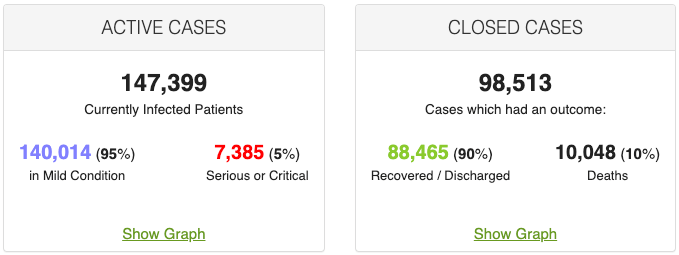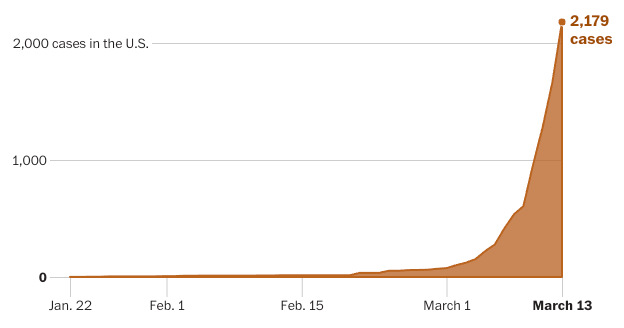
The above numbers show the current cases of COVID-19, world-wide on March 18, 2020.[1]Coronavirus Cases | WorldOMeters The known death rate is based on closed cases.
This is because only the closed cases inform us of the outcome for people who have had COVID-19. The person can either recover or they can die. Looking at the numbers above we see that 1 in 10 people who were known to have COVID-19 died. This number has increased from 6% to 10% in the last week.
The more we flatten the curve,[2]Why outbreaks like coronavirus spread exponentially, and how to “flatten the curve” | The Washington Post the lower the number of deaths.
Canada
March 18, 2020:
- Closed cases: 12 recovered (57%) & 9 deaths (43%)
- Active cases: 635 outcome remains unknown
4 out of every 10 people who we know had the virus have died.
USA
March 18, 2020:
- Closed cases: 106 recovered (44%) & 133 deaths (56%)
- Active cases: 8019 outcome remains unknown
5.5 out of every 10 people who we know had the virus have died.
Click this link to find out cases in your state: Coronavirus Cases | WorldOMeters
Flattening the curve
This link, provided by The Washington Post, explains how the virus infects exponentially. We must flatten the curve[3]Why outbreaks like coronavirus spread exponentially, and how to “flatten the curve” | The Washington Post by limiting our exposure to others. In delaying the spread of the virus, our health care systems can save lives and better deal with the emerging COVID-19 cases.
The above link shows animated graphs helpful in understanding the effects of social-distancing on the emerging numbers of COVID-19.

The above graph shows the exponential growth of COVID-19 in the USA. At the current rate (doubling every three days) there will be about 100 million (100,000,000) infected by May 2020.[4]Why outbreaks like coronavirus spread exponentially, and how to “flatten the curve” | The Washington Post
Comments
Let us know what you think!